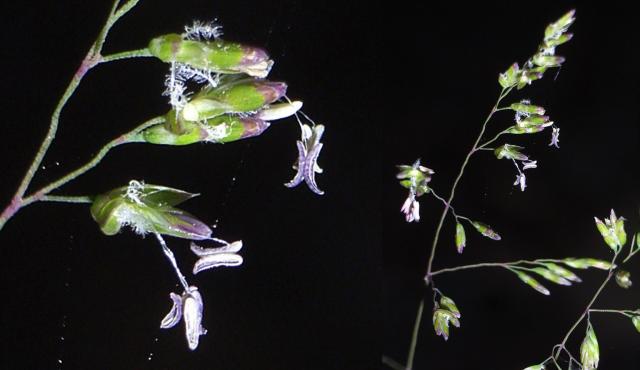
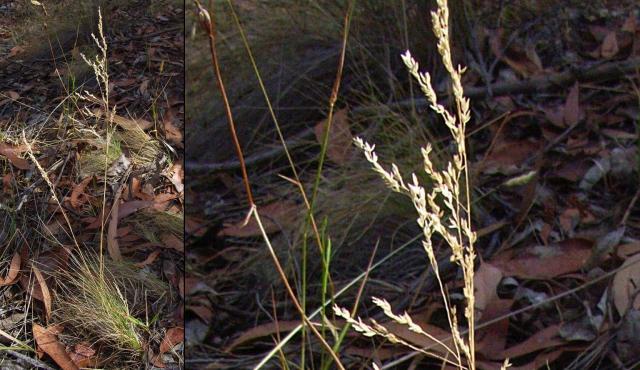
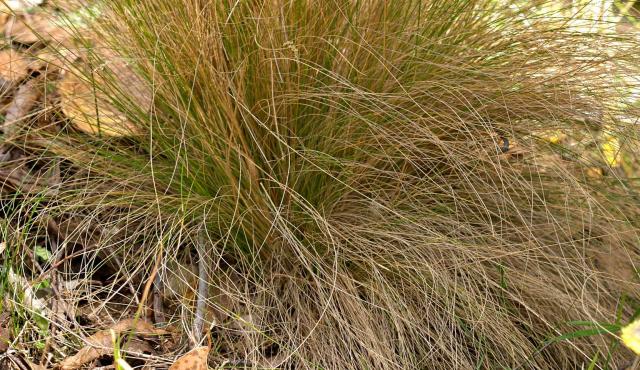
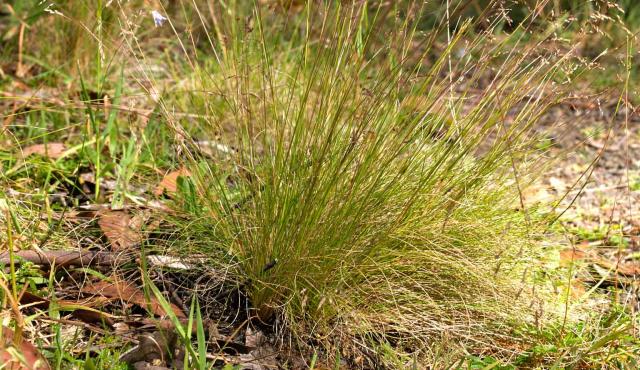
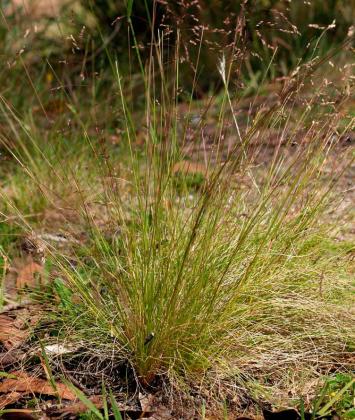
Grey Tussock Grass
Poa sieberiana
Tufted perennial. Flowering stem to 60 cm. Fine greyish green leaves, often curled and rough to touch. Leaf-sheaths are pale and both rough or smooth to the touch. Branched seedheads up to 20 cm long and 12 cm wide.
| Details | |
|---|---|
| Flora Type | Grasses |
| Former Scientific Name | Previously included in Poa australis complex. |
| Biology | Perennial. Sea-level to the alps. Resprouts after fire and tolerates grazing. |
| Native Status | Native |
| Flowering Time | Oct-Mar |
| Taxonomy | |
|---|---|
| Phylum | Tracheophyta (Vascular Plants) |
| Class | Magnoliopsida (Flowering Plants) |
| Order | Poales |
| Family | Poaceae |
| Genus | Poa |
| Species | sieberiana |
Probably the most common tussock-grass in Vic, occurring from sea-level to the alps. The stem and leaves of some Poa species were used for making string by Aboriginal people. Listed as threatened at a national level.
| Interesting Facts | |
|---|---|
| Similar Species | Variable grass with different forms _ large tussock grass in Vic but tends to be smaller in Tas. |
| Native Status | Native |